About 42 people were exhumed inside the cave of the Arene Candide during the various excavation campaigns, research that has allowed to deepen the funerary dynamics inside the necropolis.
The first phase of the discoveries took place during the excavations of the geologist Arturo Issel, but of these we do not have correct documentation of the relative data in addition to the fact that the osteological material has almost completely been lost. Already during his first visits, which took place in 1864, Issel found human bones scattered at a certain depth above some hearths, whitish bones, probably due to the action of the fire, with scratches and indentations due to the action of predatory animals.
The first intact tomb was discovered in 1874 at a depth of about 1.60 meters and subsequently another 8 during the excavation that took place with Messrs. Brooke and Brown; these are 4 tombs of an adult male, an adult female, 3 children and an elderly adult, almost all with a dolichocephalic skull. Only for 4 of these it has been possible to ascertain the position curled up on the left side, while for the remaining 4 the data are fragmentary; the grave goods were totally missing for the children, while the adults had about 2 tomb objects (bone tips, green stone axes, flint splinters, pierced shells, animal bones, jar with the remains of carbonized meal in only one case, red ocher in the form of crushed pieces while in the case of the female tomb the red ocher was scattered on the bottom of the grave).
The reverend Don Pietro Perrando brought to light 3 burials, of an infant, of a 7-8 year old child with an ante-mortem lesion on the skull and of an elderly man buried with his arms crossed on his chest and red ocher on his forehead.
Anton Giulio Barrili in 1874 found a female burial of an unspecified age but close to adolescence, with the body lying on the right side, the arms folded on the chest, the skull resting on a pebble and the kit consisting of pierced shells, animal teeth, pottery shards and a fragment of a jadeite mace head.
Alfred John Wall in 1884 brought to light another 5 tombs, but there is no news of these.
The reverend Nicolò Angelo Andrea Morelli during the excavations from 1885 to 1888 discovered two other burials protected by large stone slabs and various bone fragments of the post-cranial skeleton of 7 children; even of these bodies only the accounts of Issel remain.
But it was during the excavations under the direction of Luigi Bernabò Brea, conducted by archaeologists Virginia Chiappella and Luigi Cardini, that on May 1, 1942, in the midst of the war events of the Second World War, the tomb of the "Prince of Arene Candide” under hearth no. 5, at about 6.70 meters deep, recently dated to 26.300 BC, a young man of about 15 years of age, robust and about 170 cm tall, buried after a violent death probably caused by the aggression of a bear during a hunting trip , with a blow inflicted on the jaw and left shoulder which in fact have been removed. The young man was buried with full honors, on a bed of red ocher with a rich outfit consisting of a headdress made up of hundreds of perforated shells and deer canines, mammoth ivory pendants, 4 perforated elk antlers, three of which decorated with thin streaks and a flint blade of 23 cm. held in the right hand. The function of the 4 sticks still remains uncertain today: for a long time they were defined as command sticks or indicators of social status, while today they are supposed to have served as tools for straightening, with the help of fire, the long bones of animals used for hunting.
The richness and variety of the funerary equipment together with the excellent state of conservation and the precise stratigraphic location have made the burial an important source of archaeological, palethnological and anthropological data. However, it must be pointed out that a DNA analysis was not carried out, but only a diagnosis of sex, which for an adolescent skeleton does not guarantee its correct attribution; therefore, in the current state of investigations, it cannot be said with absolute certainty that it is a male skeleton and, if this were ascertained following DNA analyses, it would be the first man to be buried with a set typical of female burials, such as the headdress made of shells and the red ocher spread on the deposition plan of the burial.
In the subsequent excavation campaigns, the Epigravettian necropolis emerged, consisting of twelve primary burials (two of which are double) and at least six skeletal groups in secondary deposition, material on which in-depth studies have been carried out which have allowed us to formulate new hypotheses on the burial behaviors of the Paleolithic Superior. The cave was used as a place of inhumation and subsequent intentional manipulation of the burials in two distinct phases, the first in 10.870-10.470 BC and the second in 10.080-9.230 BC; although there is a difference of several centuries between one phase and another, the characteristics of the ritual behaviors were similar: supine and relaxed position of the deceased, the presence of grave goods and in the case of bisome burials there was an adult with a child at his side. On the occasion of new burials there is a secondary manipulation of the deceased which is intentional (i.e. they are deceased belonging to the same phase, testifying to a sort of direct link between the living and their ancestors) with the lateral dislocation of the remains and the subsequent relocation of elements specific, especially skulls, in niches in the stone located around the newly buried. The decision to allocate a specific place to certain funerary practices for the duration of a few generations has highlighted the bond of these populations with the territory and has allowed for a deeper study and understanding of the dynamics of life, generally characterized by the fragmentary and dispersion of funerary contexts.
In particular, it is important to highlight the presence near the burials of some flat and oblong lithic pebbles, smoothed by the action of the sea and with numerous traces of ochre; these, the so-called "cookies" were placed both intact and fragmentary, with artificial fractures and therefore it has been hypothesized that they were used for the application of ocher on the bodies of the deceased, therefore they were intentionally broken after use so that a part was left in situ and the other removed and taken away as a symbol of bond with the deceased.
In the same Cave some pebbles with traces of use and red ocher were found in the necropolis area, two of which have parallel lines on the surface, which prompted Luigi Cardini to compare them with the painted pebbles of the Mas d'Azil, thus affirming their affinity with the Pyrenean Mesolithic (L. Cardini, 1972). In Italy, stylistic comparisons belonging to the same chronological interval can be found with a plaque from Riparo Dalmeri in Trentino, with seven pebbles found in Grotta Continenza in Abruzzo and with some pebbles still in the dating phase from Grotta della Madonna in Calabria.
In the more recent layers, between 24 and 20, another 13 burials emerged, dated between 5395-5125 and 4983-4783 cal BC; a brief analysis of the burials follows:
Tomb I: cista lithic, skeleton of male teenager in poor condition, lying in a crouched position on the left side with right hand near the chin and left under the head, without equipment with fragments of coal found near the skull, probable remains of some wooden instrument no longer recognizable. Body alignment NNE-SSW and head facing NNE; traces of arthropathy (arthrosis) probably generated by continuous and intense manual work. The burial is dated to 4700-4500 BC, referable to the culture of the Square Mouth Vessels. The remains are kept in the Archaeological Museum of Finale Ligure.
Tomb II: lithic cist, adjacent to I, skeleton of an adult found with a crushed skull, perhaps due to the breakage of the cist's cover plate, with the kit consisting of a bone awl made from a pig's rib probably part of the deceased's garment . Alignment of the body and head as for the I. The remains are kept in the Civic Museum of Ligurian Archeology in Genoa Pegli.
Tomb III: with lithic cyst, it involved layers 22, 23 and 24 (probable level of the two previous cysts), in a distanced position with respect to the previous two, with NS alignment and head towards N, skeleton of an adult male about 55 years old, in good condition storage; his only equipment was a bone awl found near his chest and several fragments of charcoal. The remains are kept in the Archaeological Museum of Finale Ligure.
In the earth of layer 24, just above the first three burials, the remains of a newborn without protection and equipment were found, while in layer 21 the tomb of a child of a few months was unearthed, also lying stretched out without protection and outfit.
Tomb VI: a lithic cist, it was placed just below tomb V, but aligned in the opposite direction, i.e. from ENE to WSW and the head turned towards ENE, it rested on an irregular stone which gave an elevated position to the skull; the skeleton, of a young adult of 25-30 years, was in a good state of conservation, curled up towards the left in a less strong way than in the previous tombs, with bent arms and joined hands placed near the stone on which the head rested. The equipment consisted of a very elongated blunt rectangular millstone covered with red ocher and placed in front of the chest. Under the skeleton was a large stone which was certainly in that position at the time of deposition and which, together with other stones, constituted the cover of the Epigravettian layer; therefore this, together with Tomb V, probably belonged to an older phase than the first four tombs.
Tomb VII: a lithic cist found incomplete since the covering slab probably fell on the skeleton; the latter, therefore found in very disastrous conditions, was a young adult, forcibly curled up on her left side, with her back leaning against the rocky wall and her head turned towards the entrance to the cave. His hand was at chin level, the tomb generally lacking in grave goods; traces of arthritis in the carpal tunnel. The remains are kept in the Archaeological Museum of Finale Ligure where they have been reconstituted.
Tomb VIII: found without a lithic case, three stones were placed to protect the skeleton of a child of about 4-5 years of age, leaning against the wall and with his head turned towards the entrance to the cave, strongly curled up on his left side so that the bones of the the forearm adhered to the humerus and the hand was placed at shoulder level; as a set a vase with a square mouth finely decorated with graffiti found at 10 cm. from the head. The head presented as signs of peri-mortal trauma a jaw fracture and a perforation in the skull, both due to the violence suffered.
Tomb IX: a very simplified lithic cist, consisting of 3 large slabs, 2 placed vertically and one as a cover, therefore without protection at the two heads and therefore the head protruded from the covering slab towards the North, while the pelvis and the legs protruded towards the South; the skeleton, found in Middle Neolithic levels, was of an elderly adult woman, placed in a strongly curled up position on her left side, with bent arms, hands at face level and legs bent at hip level. Her trousseau was missing, the only element being a bone pin found at the height of the right arm, perhaps used to fasten a garment; in any case, the presence of large quantities of coals and ashes was noted as well as numerous fragments of red ochre.
Tomb X: a pit with two stones to protect the head and knees of a very small child, placed in a curled up position on the left side and without equipment.
Tomb XI: it is a bisoma burial made up of an adult and a child of about 3 years placed at his side. In the same tomb a kit of objects was found including elongated pebbles, the so-called "biscuits", and shells.
In the 70s excavations resumed inside the cave by Professor Santo Tinè, who brought to light another 3 burials, 2 of which referable to the Middle Neolithic and one to the Recent Neolithic; in particular:
ACT1 Tomb: lithic cyst with no accessories, skeleton in contracted position of a 19-20 year old male, about 158 cm tall, characterized by the particularly enlarged shape of the skull with a robust jaw; the burial can be referred to an advanced moment of the first phase of the Square Mouth Vessels culture.
Tomb AC13: found in levels 12 and 13, it belongs to a child of about 8-9 years old, lying in a crouched position on his left side facing EO with his head facing north, entirely covered with red ocher and ashen dust; it has been dated to around 3850 BC, therefore to an advanced stage of the first phase of Square Mouth Vases. The pathological picture of the deceased shows a layer of strong food shortage and a particularly unfavorable state of health; the skeleton was missing both the forearm and the left hand, probably due to the absence of protective structures for the burial and therefore it is assumed that the parts were lost due to natural causes.
ACT2 Tomb: found in levels 14 and 15, the burial can be referred to the Chassey Culture; the buried male about 40 years old, 160 cm tall. it was laid in a simple grave with legs bent towards the torso and sprinkled with ocher but without equipment. The study of the numerous burials of the Neolithic Age has made it possible to identify pathological phenomena to be connected to the introduction of the new economy, of the new lifestyle and therefore of the consequent diet based on cereals; the wide diffusion of this food favored the development of oral pathologies such as caries and abscesses whose complications were among the main causes of death among adults and children.
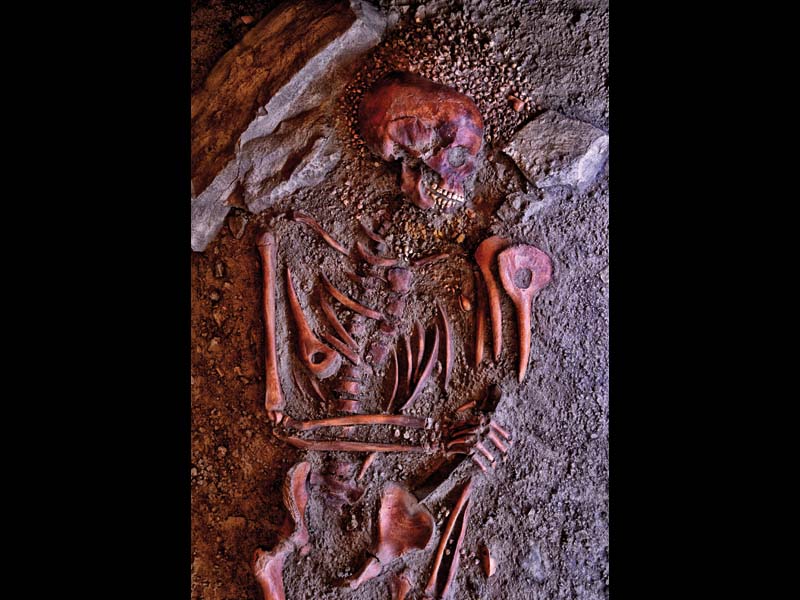


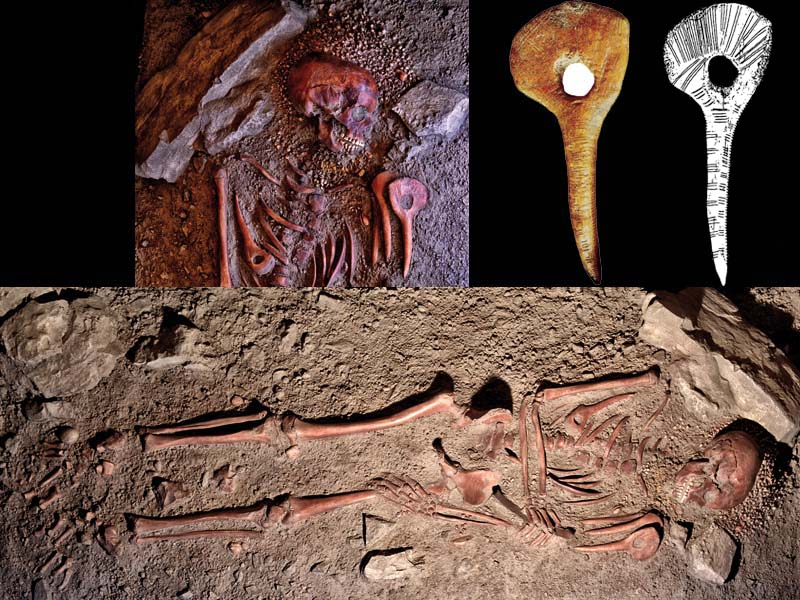
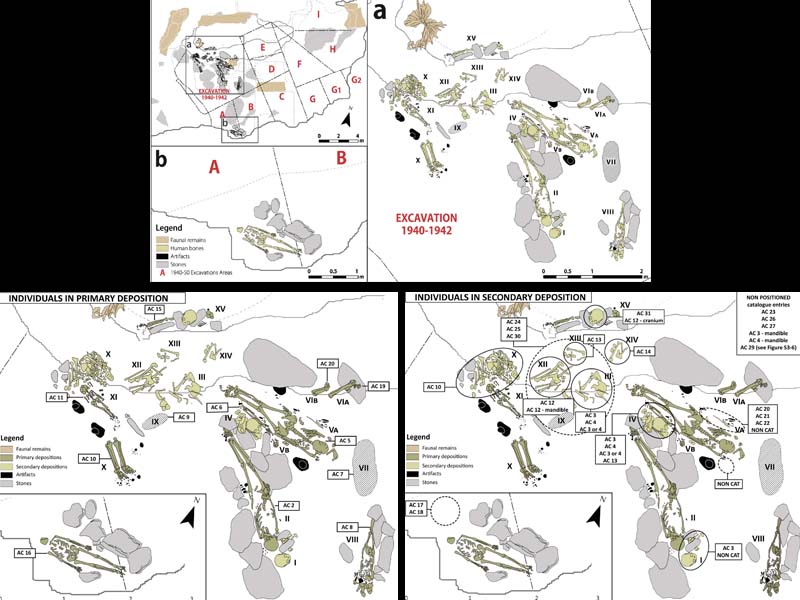
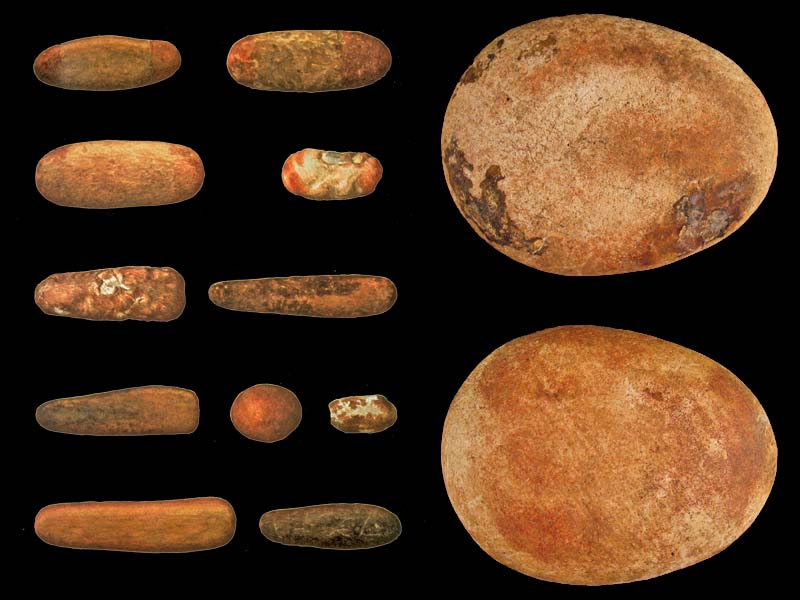
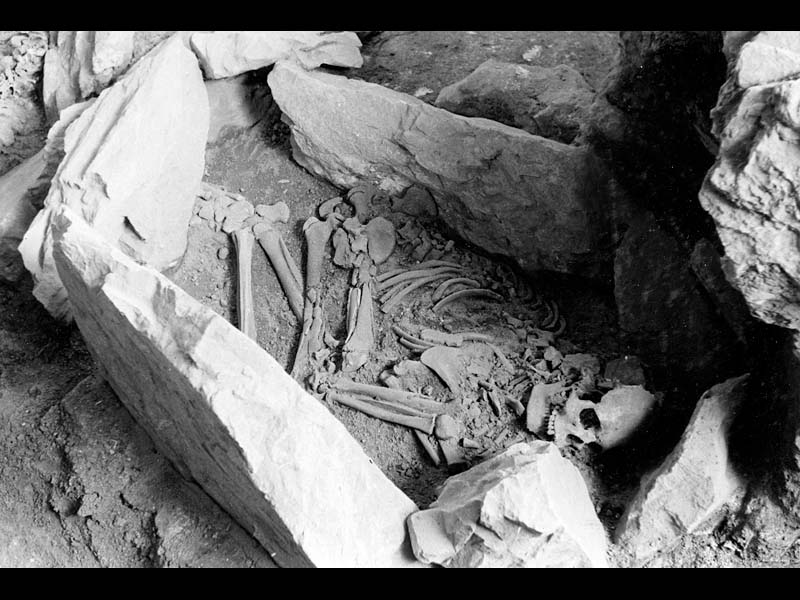

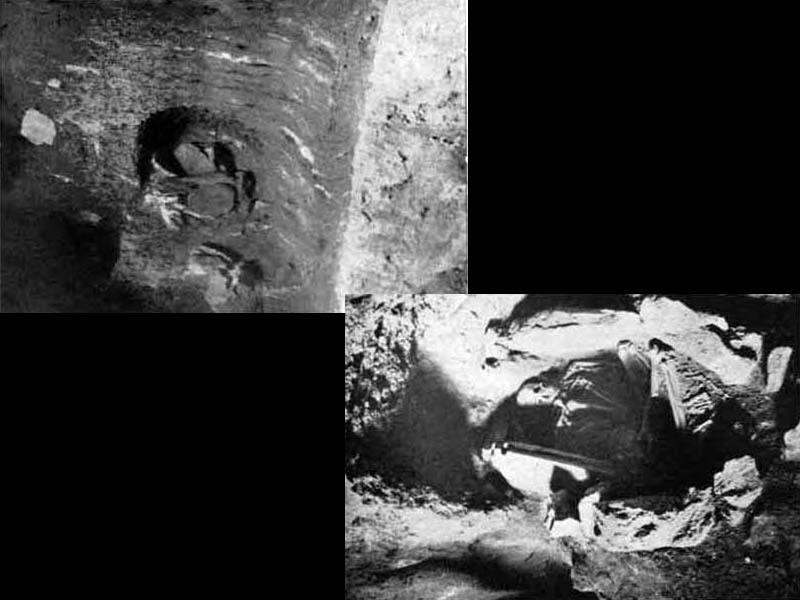

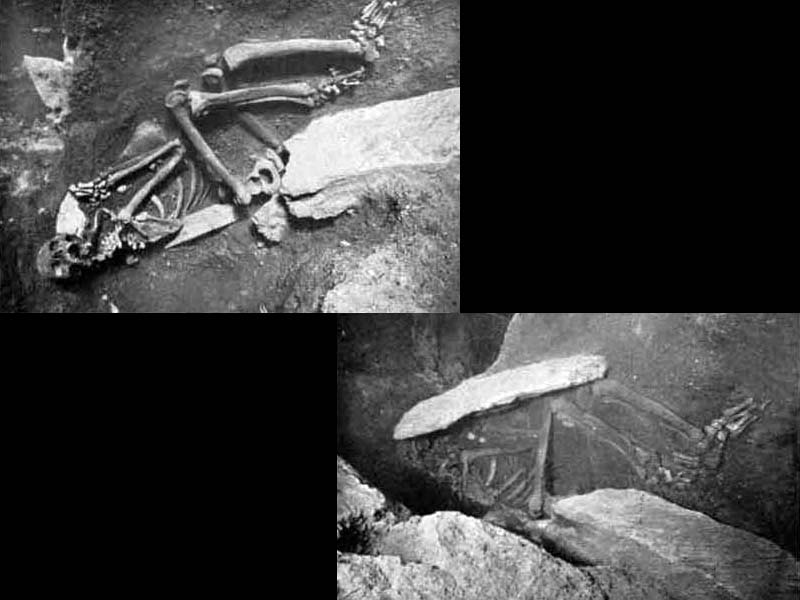
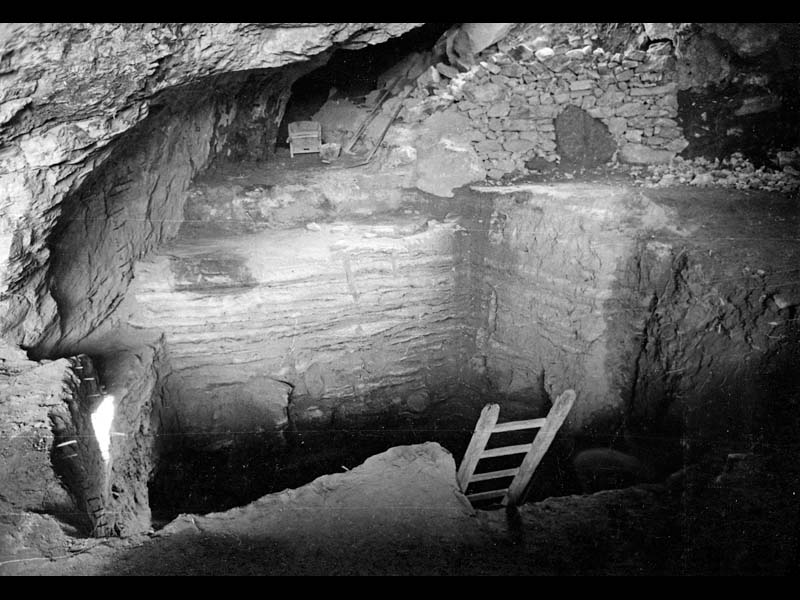
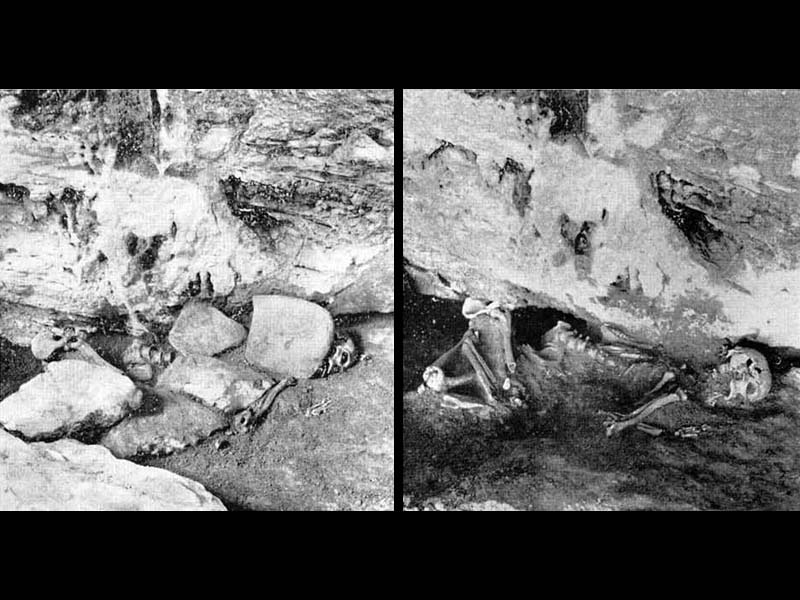
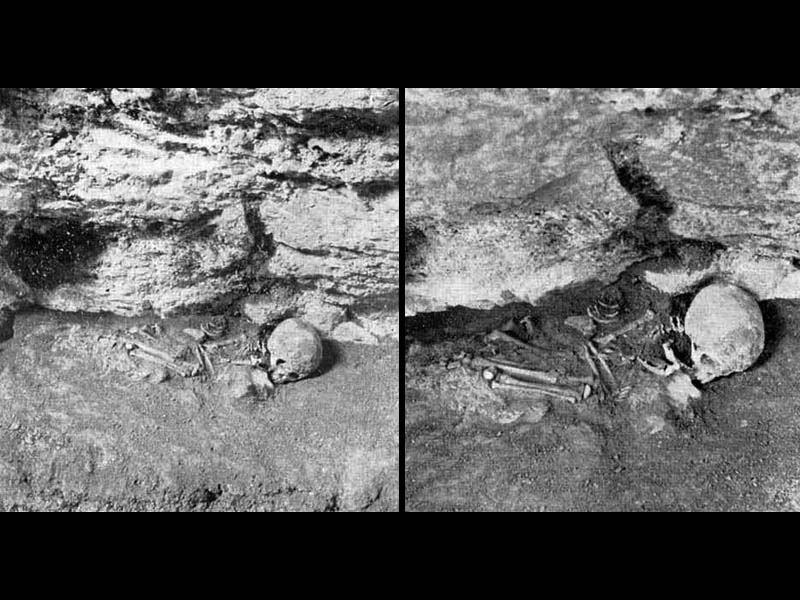
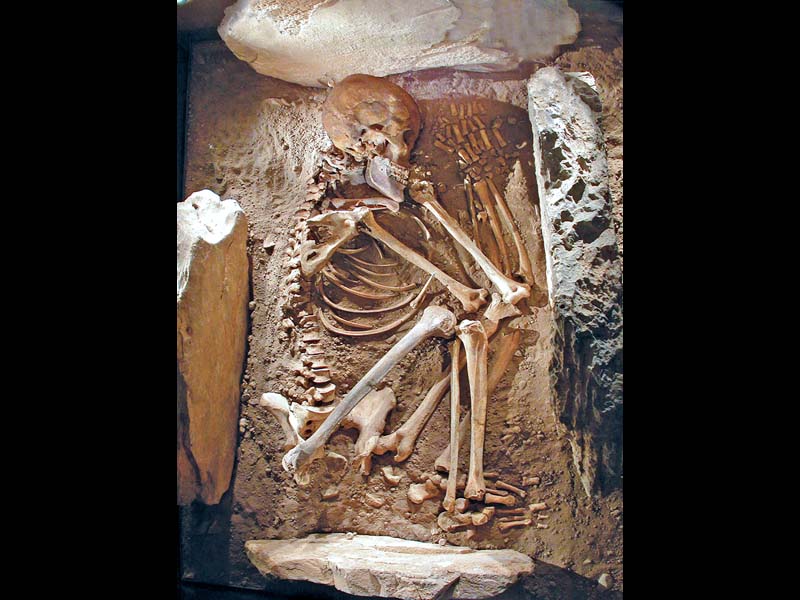

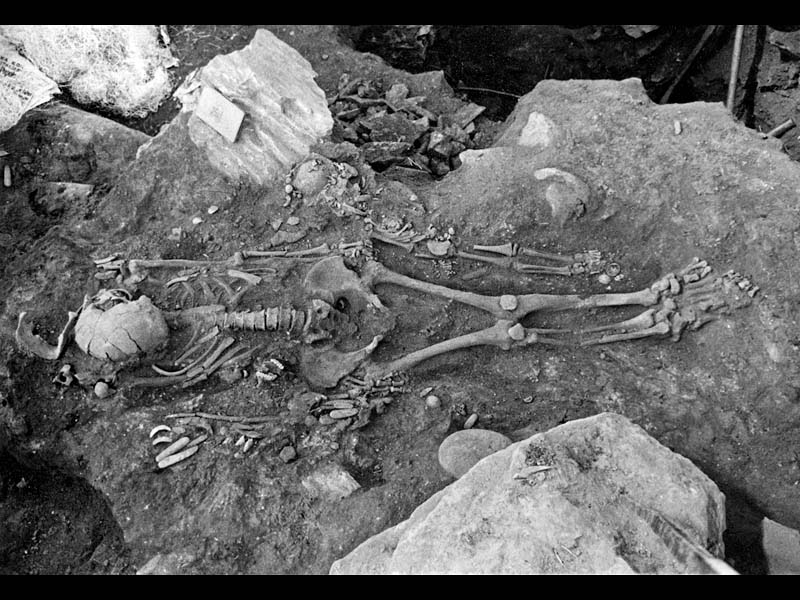
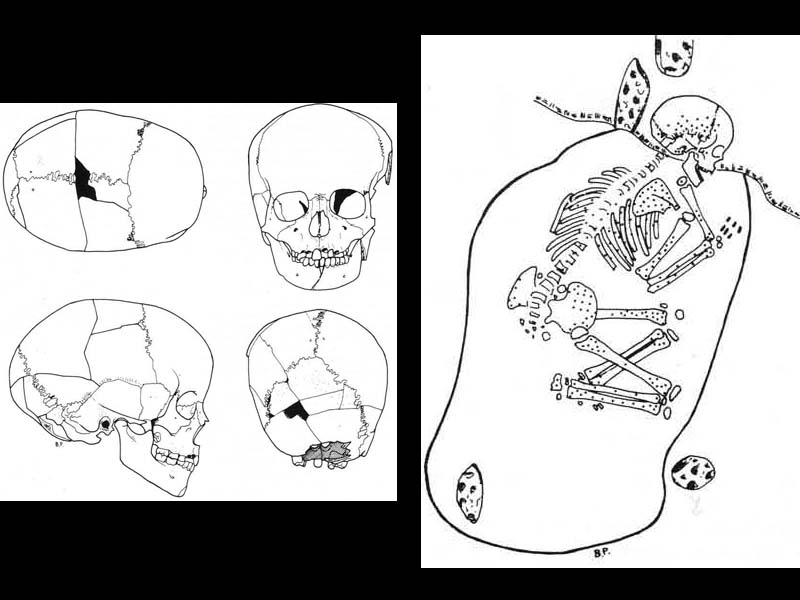
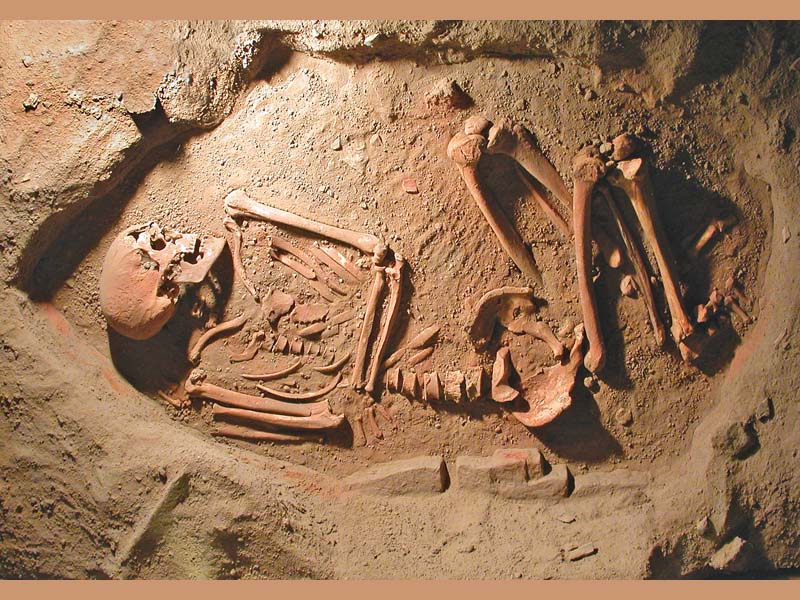
Historical Notes
The first explorations of the cave took place in June 1864 by Arturo Issel, who, realizing the great potential of the site, promoted excavation campaigns that lasted from 1864 to 1876. In the same period, one of his pupils also took part in the excavations, Nicolò Angelo Andrea Morelli, to whom important discoveries are to be attributed, especially in subsequent campaigns carried out independently, including a large number of Neolithic burials and the first clay statuette found in 1886.
However, an intense and more precise excavation activity was carried out by Bernabò Brea in the years 1940-42 and 1948-50, a work which led to the definition of the stratigraphy with the identification of the different cultural phases that occurred on the site. In the 70s Santo Tinè with the collaboration of Roberto Maggi continued to explore the levels of the Ancient and Middle Neolithic. Activities to safeguard the site were undertaken in the 90s. For further information on the history of the excavations, see the report "Arene Candide: history of the excavations".
The cave of the Arene Candide measures 70 x 20 meters and has an elongated shape in the east-west direction, with the opening divided in two by an enormous boulder, currently welded to the vault by stalagmite concretions. The internal part is divided into 3 zones: the longer and narrower central one is called the "Issel chamber"; the one on the left, the "Morelli room", has a circular shape from which short tunnels branch off; the one on the right, the "Gandolfi room" is smaller, with the entrance marked by a rocky pillar, full of concretions and stalagmites.
CARD
LATEST PUBLISHED TEXTS
VISIT THE FACTSHEETS BY OBJECT

